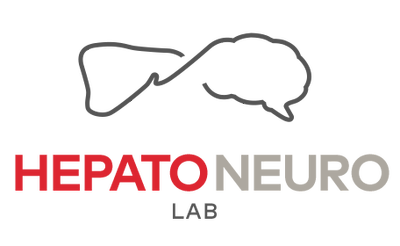Background: Chronic liver failure leads to hyperammonemia, a central component in the pathogenesis of hepatic encephalopathy (HE). Neurotoxic effects of ammonia induce numerous metabolic alterations, such as increased cerebral lactate and glutamine. In brain edema associated with acute liver failure, glutamine plays a controversial and lactate a well-defined role. Brain edema is also present in chronic liver failure; however, roles of lactate and glutamine are less understood. We previously demonstrated an increase in de novo synthesis of lactate in bile-duct ligated rats (BDL). To define the role of lactate in the pathogenesis of brain edema, this study investigates its relationship with ammonia and the effects of inhibiting lactate production. Methods: BDL rats were treated either with AST-120 (spherical carbon adsorbent, 1 g/kg/day for 6 weeks, by gavage) or with dichloroacetate (DCA, 25 mg/kg for 7 days starting at week 5 after intervention, intraperitoneally). AST-120 acts as an ammonia sink in the gut. DCA is a pyruvate dehydrogenase kinase inhibitor that leads to pyruvate dehydrogenase stimulation and to a shift of pyruvate metabolism from glycolysis to oxidation and, consequently, to a decrease in lactate production. Brain lactate (Amplex red fluorescence) and glutamine (HPLC), as well as edema (specific gravimetric technique) were measured in brain tissue of non-treated and treated BDL rats. Results: Brain lactate and glutamine increased and brain edema developed in BDL rats vs SHAM-operated controls. AST-120 treatment partially decreased lactate levels: AST-120-treated BDL: 155.1±12.8 µM (p<0.05 vs SHAM, p<0.001 vs BDL) compared to BDL: 254.6±10.1 µM (p<0.001 vs SHAM) and SHAM: 111.7±7.1 µM; while glutamine levels did not change: AST-120-treated BDL: 1024.2.±65.2 µM (p<0.001 vs SHAM, ns vs BDL) compared to BDL: 796.6±71.5 µM (p<0.001 vs SHAM) and SHAM: 442.8±33.8 µM. Following DCA treatment, in treated BDL rats brain lactate normalized (76.2±3.3 µM, ns vs SHAM, p<0.001 vs BDL) and glutamine levels remained unchanged (569.2±80.4 µM, p<0.05 vs SHAM, ns vs BDL). Both AST-120 and DCA treatments led to a significant reduction of brain water content, reaching similar values to those seen in SHAM-operated rats. Conclusions: Ammonia-lowering therapy prevented the apparition of brain edema by partially decreasing brain lactate, thus suggesting that ammonia is not the only factor that contributes to an increase in brain lactate. Inhibition of lactate production attenuated brain edema, while cerebral glutamine remained high. Our findings reveal that increased brain lactate, and not glutamine, contributes to the pathogenesis of brain edema in minimal HE.

